If you're hip enough to find yourself in the midst of a conversation about monofilament manufacturing, you'll likely hear a quip that goes something like "it all comes from the same three factories in Japan anyhow!" In reality, this isn't the case. Monofilament manufacturers operate factories in Japan, China, India, here in the USA and lots of other places. That said, it is true that many major fly fishing brands, such as those highlighted below, work with some of the leading Japanese manufacturers of nylon, copolymer and nylon monofilament. Additionally, these brands often source their products from the same overseas manufacturer and/or factories. But this doesn't mean all monofilament is the same stuff wrapped in different packaging — these factories have the ability to turn out a seemingly endless variation of plastics and each fishing brand works closely with plastic makers to design leader and tippet materials to their design, needs and specifications.
That said, raw technological advancements in plastics manufacturing and extrusion often become available to the industry as a whole, for each brand to leverage and utilize in their own way. And, given the trend seen in leaders and tippets at this year's IFTD 2015 in Orlando, one of those recent advancements — the ability to create stronger monofilament fishing line with little to no increase in diameter — seems to be ready for market.
Four different brands — Airflo, RIO, Scientific Anglers and Orvis — introduced new and improved tippet and leader material this year in Orlando. RIO and Orvis both introduced new nylon monofilament (commonly called "mono") while Airflo introduced a new, improved generation of fluorocarbon and Scientific Anglers introduced new fluorocarbon and nylon materials.

RIO is reporting a 20% strength increase for its new nylon tippet and leader material without giving up any suppleness, which it has dubbed Powerflex Plus — marking it as an evolution of their existing Powerflex line. According to RIO, Powerflex Plus "uses VHT Nylon Technology with a new technical modification of the nylon copolymer formulation. This new material results in a 20 percent increase in tensile strength over regular leaders without sacrificing flexibility, diameter, nor knot strength. For example, 5x (0.006in/0.152mm) Powerflex Plus has a tensile strength of six pounds, which is more than 20 percent stronger than the usual 4.5 to 5 pound strength of most other 5x materials. "

Orvis' is also touting its new nylon tippet and leader material, Orvis SuperStrong, as offering a big leap in strength without sacrificing elasticity, knot strength or suppleness. Orvis calls it "The absolute best nylon material on the market, [with] a full 6 pounds [breaking strength] in 4X." Orvis is also highlighting technological advancements in plastics extrusion processed used to make its new SuperStrong leaders which Orvis's Tom Rosenbauer describes as offering vastly smoother — and truly uniform — transitions from one diameter to the next. According to Rosenbauer, the result is much better energy transfer that translates into superior fly turnover.

For those who prefer to carry fluorocarbon (or both, as most experienced anglers do), Airflo also introduced a new, stronger-for-its-diameter tippet and leader material in its Sightfree G5. As its namesake implies, Airflo describes Sightfree G5 as a "fifth generation fluorocarbon" that takes advantage of recent advancements in double resin formulas. Double resin formulas, originally introduced around 6 years ago, are also known as double structure fluorocarbons. These fluorocarbon lines are in essence two lines in one, as two different fluorcarbon structures or fomulas are extruded together as one fused line.

Scientific Anglers describes its new materials as "up to 35% stronger than their predecessors" and, as mentioned, both fluorocarbon and nylon are along for the ride. SA's head of R&D, Andrew Bosway, said the company “started over from scratch with the sole purpose of creating leaders and tippets with the strongest straight tensile and wet knot strength on the market. Based on months of data collection, testing, and on-the-water field work, we’re confident we’ve done just that.”
Whether you prefer mono or fluoro, the trend for late 2015 and beyond seems to be less chance of break-offs and fewer lost fish. And that's a good thing.




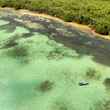


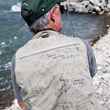



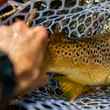

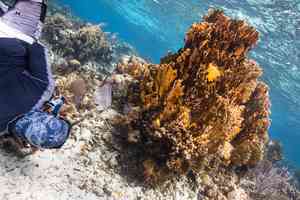






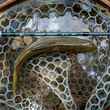

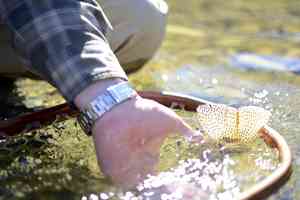
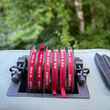

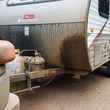
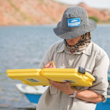
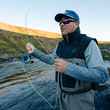

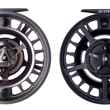
Comments
John Zimmer replied on Permalink
This comment is to all tippet suppliers. To improve your tippet color a 6" section about 5' from the end of the spool. This will alert the fisherman that the tippet spool is getting low and needs replacing. I've run out of tippet twice this summer and did not have another spool of the size I was using.
Also, why not include a tippet ring in each package of leaders that are sold? It shouldn't add too much to the cost of the package.
Chad Shmukler replied on Permalink
Good ideas all around, John.
Nicolas replied on Permalink
Dear John
Just have a look for STROFT tippet. Should be available in the states, too. It's top quality, made in Germany, and comes with a "widow" in the backside of the spool to protect from running out of tippet...
Cheers
Nicolas
Ionut Cotinghi replied on Permalink
There are much more tippet brands then those ones. And some of them better. Check Soldarini's tippet breaking strenght. soldariniflytackle.net/index.php/pages/items_list/03-tippet-e-leader
Joe replied on Permalink
I appreciate the improved tippet strength...but someone at Orvis decided to increase the diameter of their tippet spools by 1/4"--making them too large for the tippet pockets of my vest. After 30 years, I'm not changing my vest, so I guess I'll change brands.
Isn't progress wonderful?!
Pages